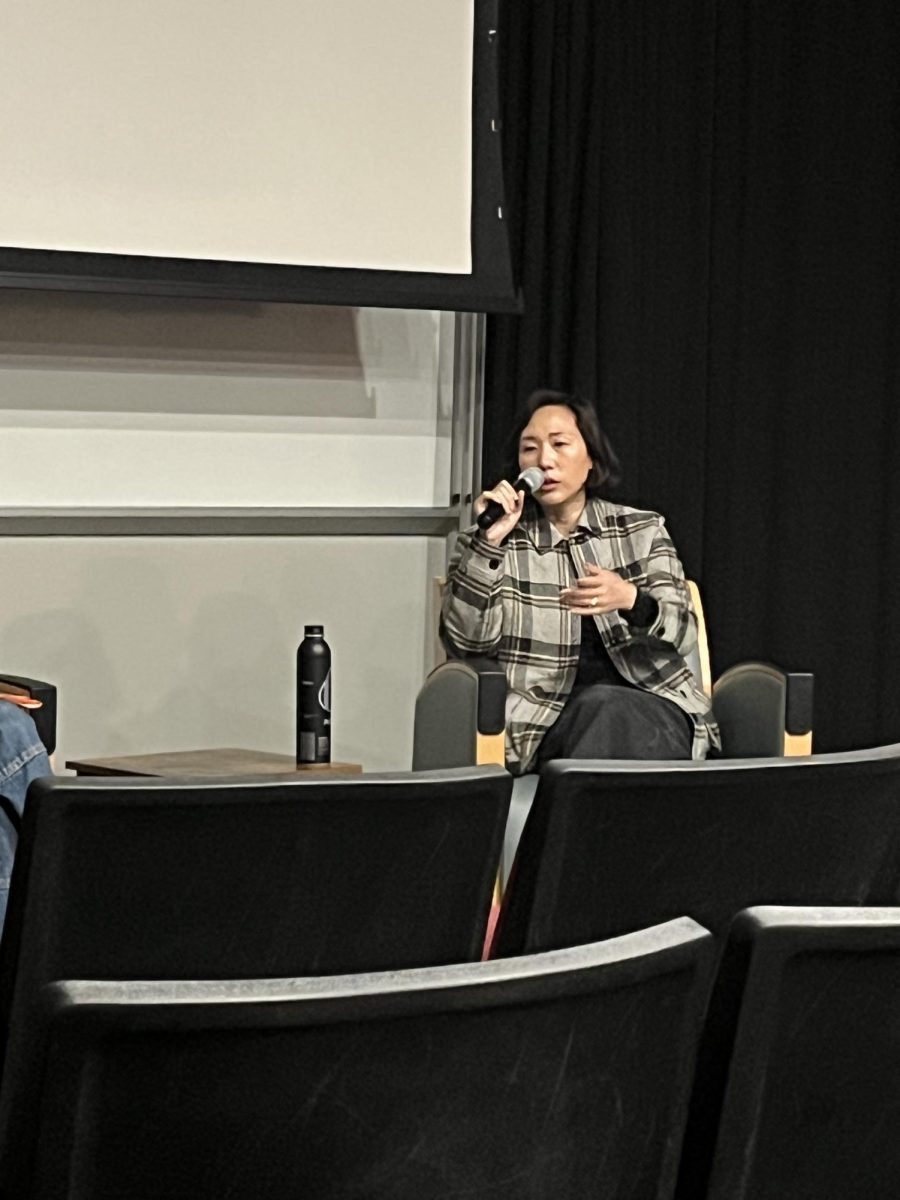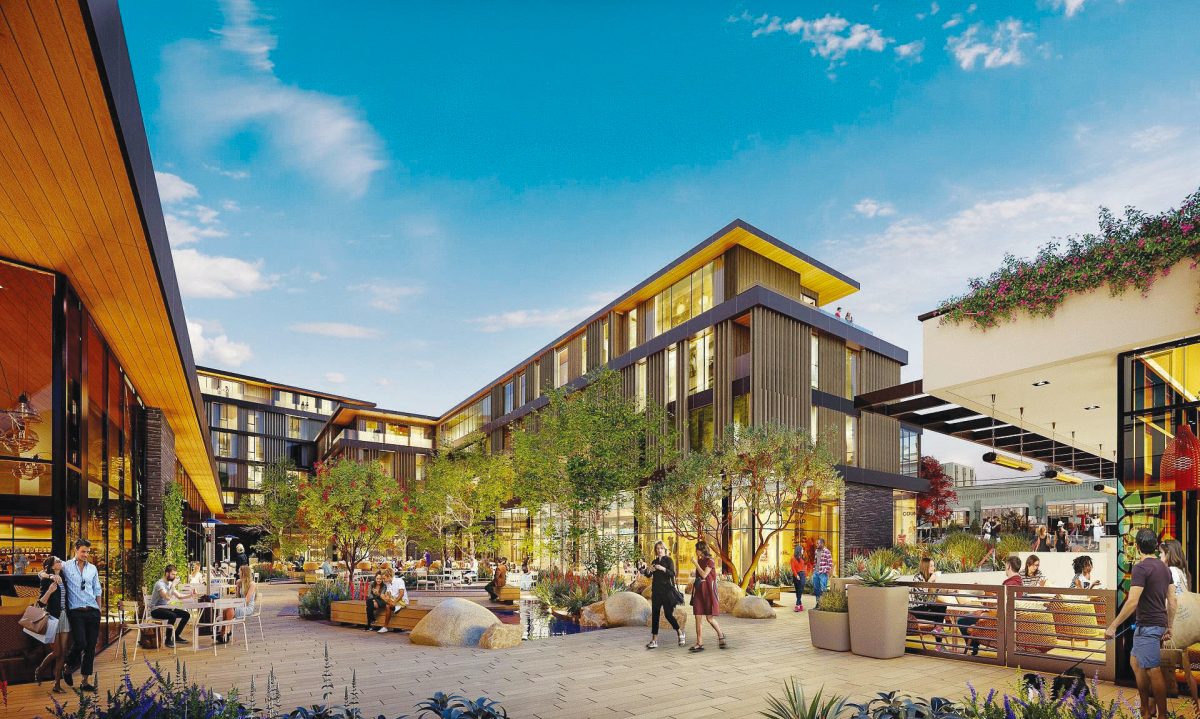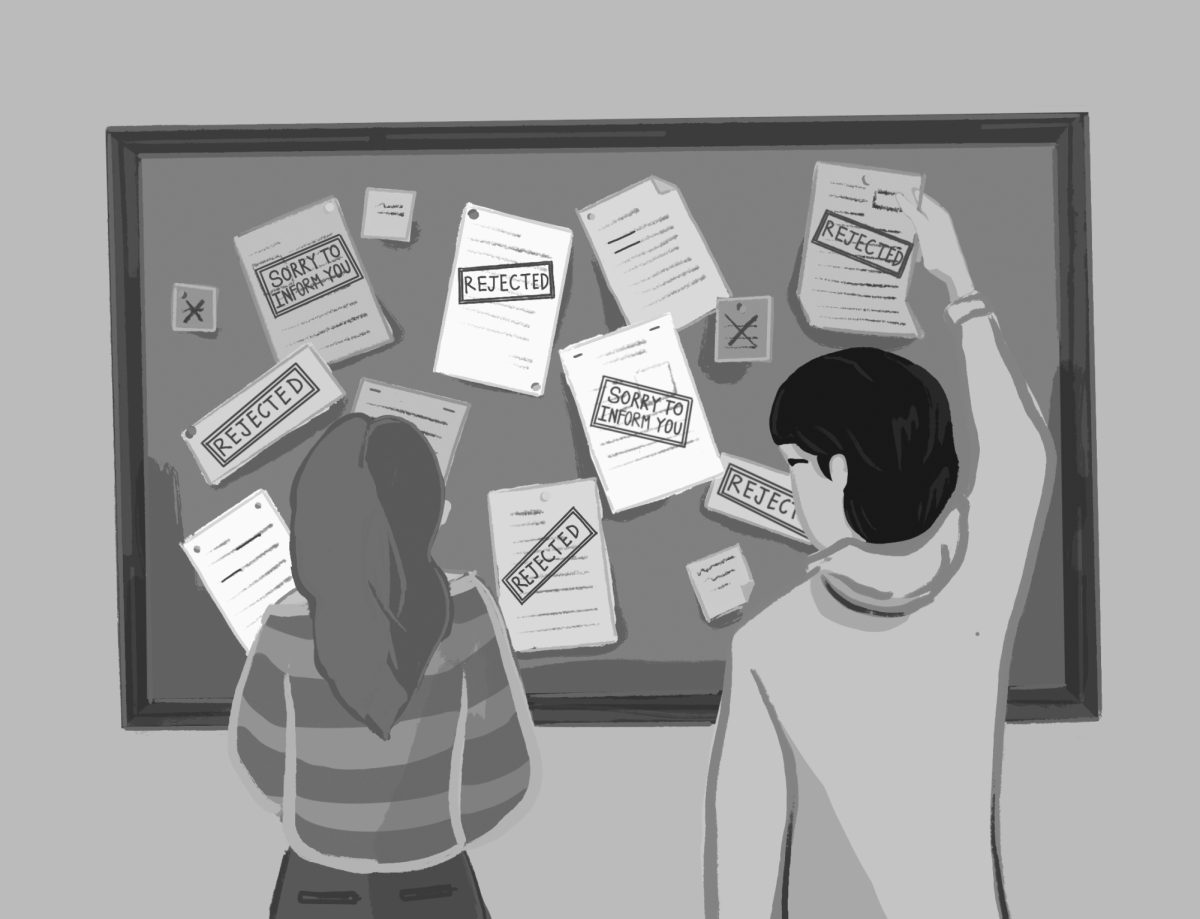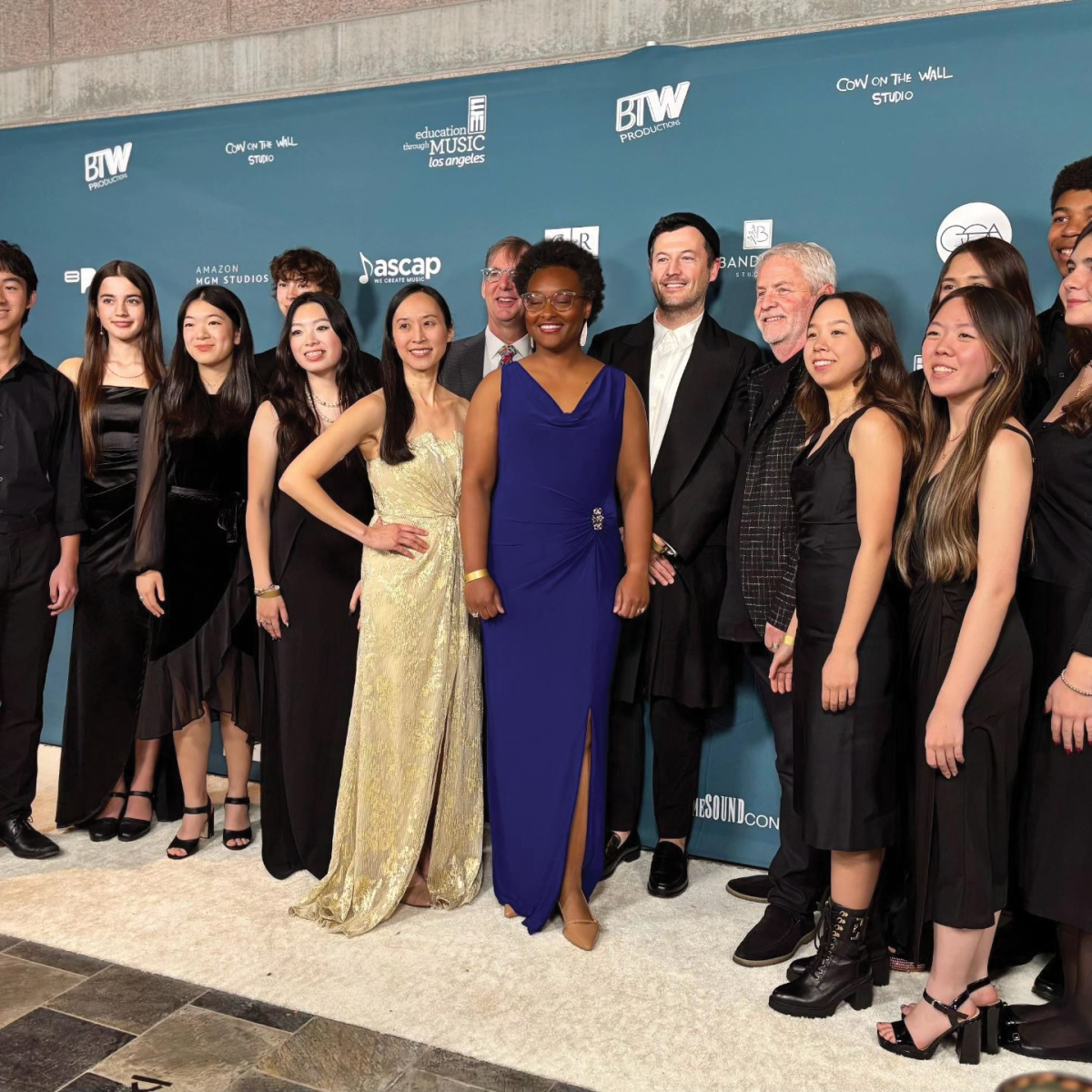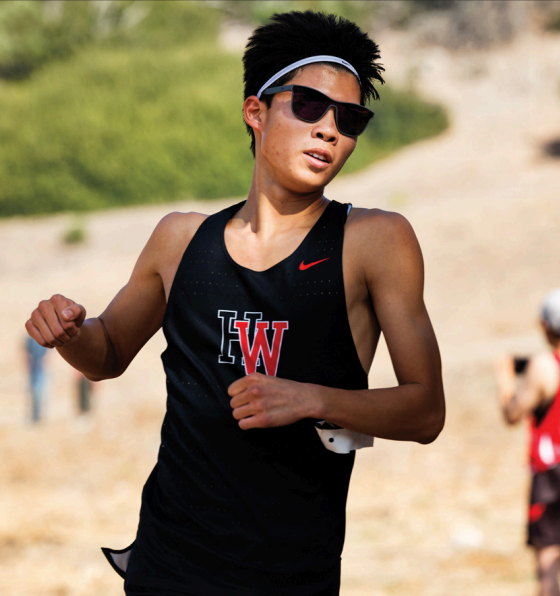Taylor Gamradt ’26 stood in front of her closet, considering her options for the day. Her eyes gloss over her vibrant collection of clothing, each piece a different bold color. She reaches for a bright red sweater — her signature color — and pairs it with flared jeans that balance comfort and style. To complete the look, she layers on her favorite accessories: a stack of intricate gold bangles, chunky rings and a pair of statement earrings. Gamradt said getting dressed is about crafting an outfit that energizes her and sets the tone for the day ahead.
“I always love wearing something fun because it helps me get through the day,” Gamradt said. “I really believe in the saying ‘l look good, feel good.’ If I have a fun outfit with a lot of color, I’ll have a happier day.”
Gamradt said colors and coordination both contribute to what makes an outfit.
“I always like to color coordinate, and I like wearing bright colors because it just feels like it gives me more energy,” Gamradt said. “I like to see things that are coordinated and playing with different silhouettes, like baggy or form-fitting.”
Lucia Plata ’25 said her passion for art helps guide her expression through clothing.
“It just kind of depends on the clothes that you buy, how you want to appear and trying to curate a look while still having fun with it,” Plata said. “I really like art, so it’s another way to do that and to make things interesting and fun when I get up in the morning.”
Sarah Anschell ’26 said the way students dress offers a glimpse into their individuality and mood.
“It’s cool seeing the different ways people like to dress or certain things everyone wears,” Anschell said. “I also love that you can tell the vibes on campus based on [outfits]. If most people seem to be in sweats on a given day or if people are dressing cute, it’s a good way to read someone’s vibe. Fashion can be a way to reflect how you’re feeling without needing to say a word. It’s cool to see how everyone’s clothing choices can unconsciously sync up with each other.”
Mimi Rhee ’25 said the school’s environment and resources allow students to embrace wearing what feels comfortable, noting how the blending of gender norms has become increasingly prevalent.
“At Harvard-Westlake, it’s a lot more open and easier to wear whatever you want,” Rhee said. “ There’s not really a lot of pressure because there’s such a wide variety. A lot of people wear the Harvard- Westlake gear which [is] unisex. I think the line [between gender norms] has become a lot more blurred.”
This shift in attitude of clothing as a rigid marker of gender identity to a form of identity is seen.
Ava Hanasab ’26 said authenticity in style has evolved, particularly as traditional expectations around clothing have loosened.
“Clothing in older times used to be a marking for strict gender roles, but now it’s become a base for someone to show off their creativity,” Hanasab said. “We’re lucky to be living in an era where acceptance and diversity are celebrated. Rejecting these outdated stereotypes about men and women really emphasizes the progress we’ve made toward equality and self-expression.”
Callum MacLachlan ’26 said gender norms restricts what he wears to an extent.
“I’m not really bothered by traditional gender norms, but they still persuade away from wearing baby tees,” Maclachlan said. “They look sick but also something about the who ‘should’ wear them makes me not want to.”
Dashiell Sparks ’26 said clothing is a tool for self-expression that transcends traditional norms of expression.
“People wear what is comfortable to them, and a lot of time, you can tell someone’s personality just based on what they’re wearing,” Sparks said. “I hope people continue doing that and don’t feel they are being limited by their gender.”
Sky Jefferson ’27 has embraced this openness by wearing unique clothing pieces and rocking a purple and blue dyed split hairstyle. Jefferson said the school provides a safe space to explore and experiment with personal style.
“This school is very open about being yourself, so I decided to try new things,” Jefferson said. “It makes me feel happier and more welcome in a way because I’m able to talk to people without having to worry about judgment. I’ve thought about coloring my hair a lot and I like wearing colorful clothes, like [my] green shoes.”
Upper School Advanced Placement Environmental Science Teacher Nadine Eisenkolb said that students have become increasingly expressive with their style during her time teaching.
“I do think that over time, like, [since] I started working here ten years ago, that people have expressed themselves more freely in their clothing,” Eisenkolb said. “I’m not just thinking about clothing. I’m also thinking hairstyles and little things they do to express themselves.”
Eisenkolb said the pandemic played a significant role in her students’ burst of expression, as people had time to explore themselves.
“We were so isolated and we couldn’t express ourselves [for anyone] to see it,” Eisenkolb said. “When we came back from the pandemic, maybe people were eager to be a bit more creative with their clothes. I was just thinking of [the pandemic] as an impetus to change.”
In past years, the school had a stricter dress code that dictated guidelines for what students could wear, but over time, these rules have become less strictly enforced.
Ale Collins ’27 said the freedom to dress without strict limitations allows students to gain confidence in exploring their personal style.
“We don’t really have a dress code, so it gives everybody an opportunity to dress however they want and express themselves through their clothes,” Collins said. “People gain more of a sense of who they are as they get older, so they start dressing more to what they want to wear and what they identify with.”
Los Angeles’ fashion industry, consisting of over 3700 independent designers, attracts global interest with its variety of unique vibrancies in style, according to the California Fashion Associate. This ethos of diverse self-expression is mirrored at the school, where students are blending current trends with their individual styles.
Gian Ngo-Willis ’26 said student fashion echoes the diverse fashion industry of Los Angeles.
“As time has gone on, Harvard-Westlake has reflected general society in LA, especially with cultural expression,” Ngo-Willis said. “I feel like it ties in with pop culture and fashion. Everything has gotten more progressive and people are closely following trends, but they’re also putting their own spin on it. Students are making use of what they have in a very resourceful way through fashion and expressing themselves. People are becoming more open to showing what they like and what they do through what they wear.”
Hanasab said students’ experimentation with clothing reflects their own growth and creativity.
“People can experiment with new looks, follow trends or go out of societal norms,” Hanasab said. “At this age, we’re in a place where people explore themselves more. That’s reflected in clothing and makes it so fashion isn’t all about the actual clothes, but more about a person’s identity or creativity and personality.”

